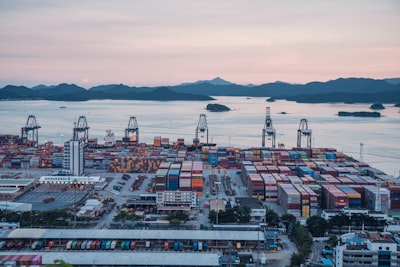US Tariff Hikes Rock Asean: What It Means for Regional Trade and Global Supply Chains
As global supply chains grapple with shifting trade policies, fresh US tariffs on Southeast Asian economies have sent shockwaves across the region. Announced by President Trump in July 2025, the new tariffs—ranging from 25% to 40%—target six Asean member states, raising urgent questions about the future of regional integration, digital trade, and economic resilience in Asia. So, what is at stake, and how is Asean responding?
Why US Tariffs on Asean Matter in 2025
The US’s move comes against a backdro pof ongoing geopolitical tensions and rising protectionism worldwide. For ASEAN, which includes dynamic economies like Indonesia, Malaysia, Singapore, Thailand, and Vietnam, trade remains the lifeblood of growth. Suddenly, significant portions of their exports face increased barriers to the all-important US market, threatening jobs, supply chain stability, and investment confidence.
Key issues at play:
- Trade war ripple effects: How new tariffs disrupt global supply chains.
- Regional unity vs. individual deals: Can Asean maintain a common stance?
- Pressure for digital integration: Will this crisis accelerate digital payment and trade links?
Growing Geopolitical Tensions: Tariffs as Tools of Rivalry
The latest tariffs, described as "sharpened instruments of geopolitical rivalry" by Malaysia’s Prime Minister Anwar Ibrahim, go far beyond mere economics. They echo a global trend where trade policies double as strategic levers—fragmenting the economic landscape and intensifying great-power competition between Washington and Beijing.
China, a major Asean trading partner, has urged the region to resist protectionism and deepen cooperation. The ongoing negotiations over the South China Sea Code of Conduct highlight how economic and territorial disputes are increasingly intertwined.
Can Asean Unite? Challenges and Opportunities for Regional Integration
While Asean has long promoted economic collaboration, the US tariffs put unprecedented strain on the bloc’s unity. Some members may be tempted to cut individual side deals with the US; others could push for swift, collective countermeasures. The crisis spotlights the need for:
- Deeper intra-Asean trade: Reducing reliance on external markets by streamlining regional value chains.
- Stronger digital infrastructure: Linking national payment systems for seamless cross-border commerce.
- Investment in resilience: Building mechanisms to absorb external shocks, such as diversified export markets and supply chain redundancies.
What Does This Mean for Businesses and Investors?
With US tariffs potentially raising prices and disrupting established routes, companies in Southeast Asia will need to:
- Reassess supply chain risks – consider shifting production or sourcing to avoid tariffs.
- Leverage digital tools – adopt Asean-linked payment platforms and digital trade solutions.
- Explore new trade agreements – look for opportunities within RCEP or through bilateral deals.
Top Trends to Watch in 2025
- Digital Integration: Countries like Singapore, Thailand, and Malaysia are linking e-payment systems for real-time cross-border transfers.
- Investment Diversion: Some multinationals may relocate operations to non-tariff-hit Asean members.
- Push for Asean solidarity: Ongoing calls for a unified economic response to external threats.
- Debate over protectionism: Ongoing discourse about the long-term impact of tariffs on global growth and regional cooperation.
Frequently Asked Questions (FAQ)
Q: Why did the US impose new tariffs on Asean? A: To address perceived trade imbalances and boost US industrial capacity, according to American officials.
Q: Which Asean countries are affected? A: As of July 2025, six Asean states have received notification, with Singapore and Vietnam expected to follow.
Q: How is Asean responding? A: Calls for stronger internal trade, integration, and the development of unified policy positions are gaining traction.
Q: Will this accelerate the adoption of regional digital payment systems? A: Yes, as Asean seeks to enhance trade efficiency and reduce frictions within the bloc.
Conclusion: Asean at a Crossroads
US tariffs have thrust Southeast Asia into a new era of economic realignment. While the immediate concern is mitigating the pain of tariff hikes, the bigger challenge—and opportunity—is to transform this crisis into a catalyst for deeper regional integration, digital transformation, and long-term resilience. As Asean leaders craft their response, the world is watching whether the region can seize this moment to bolster its economic future.
Related Reading:
- What is the South China Sea Code of Conduct?
- How digital payment systems are linking Southeast Asia
- Guide to US trade policy under Trump

Comments
No comments yet. Be the first to comment!